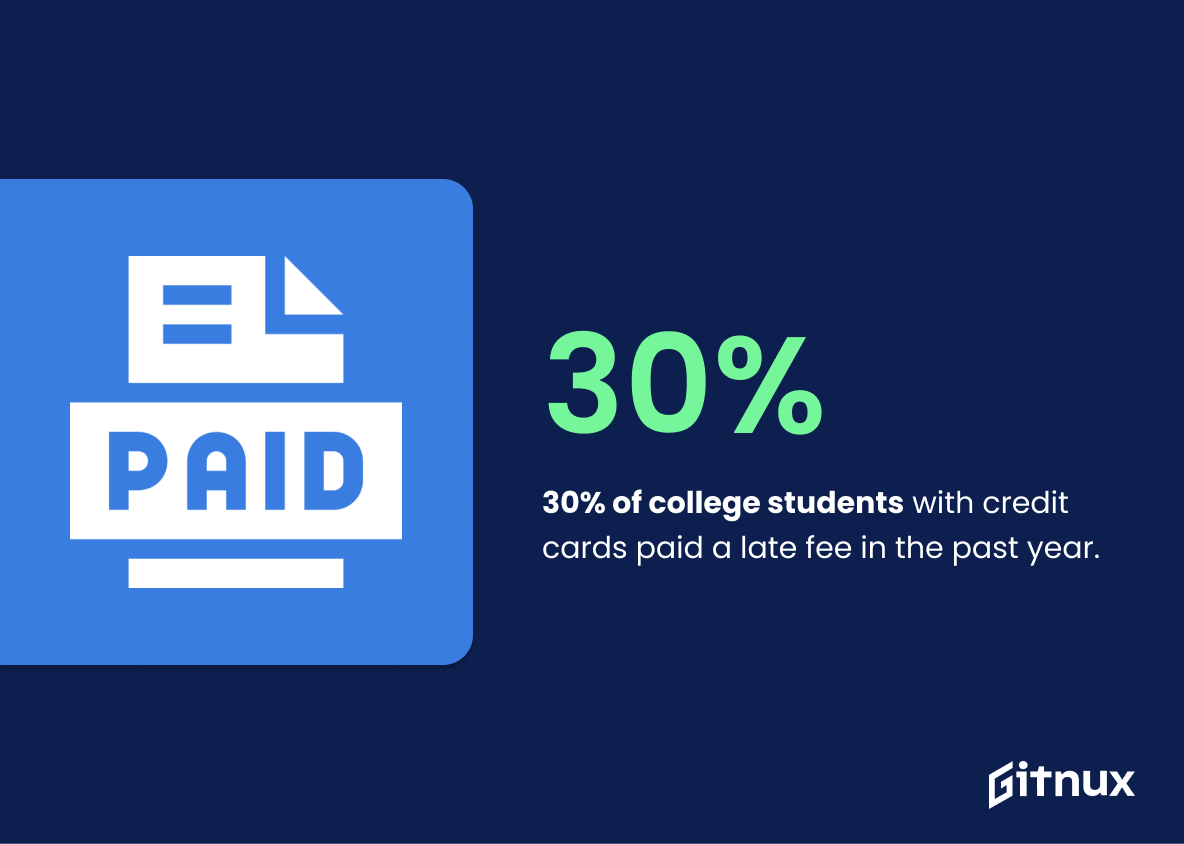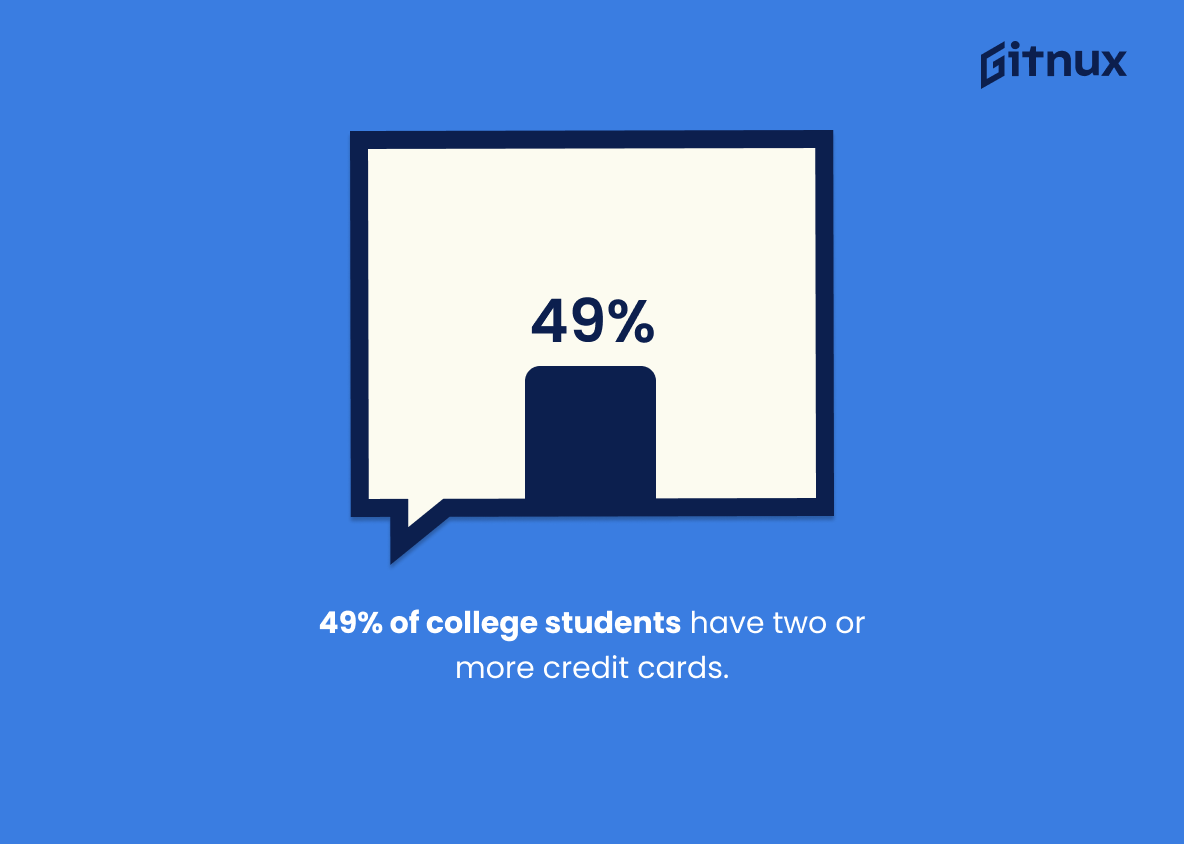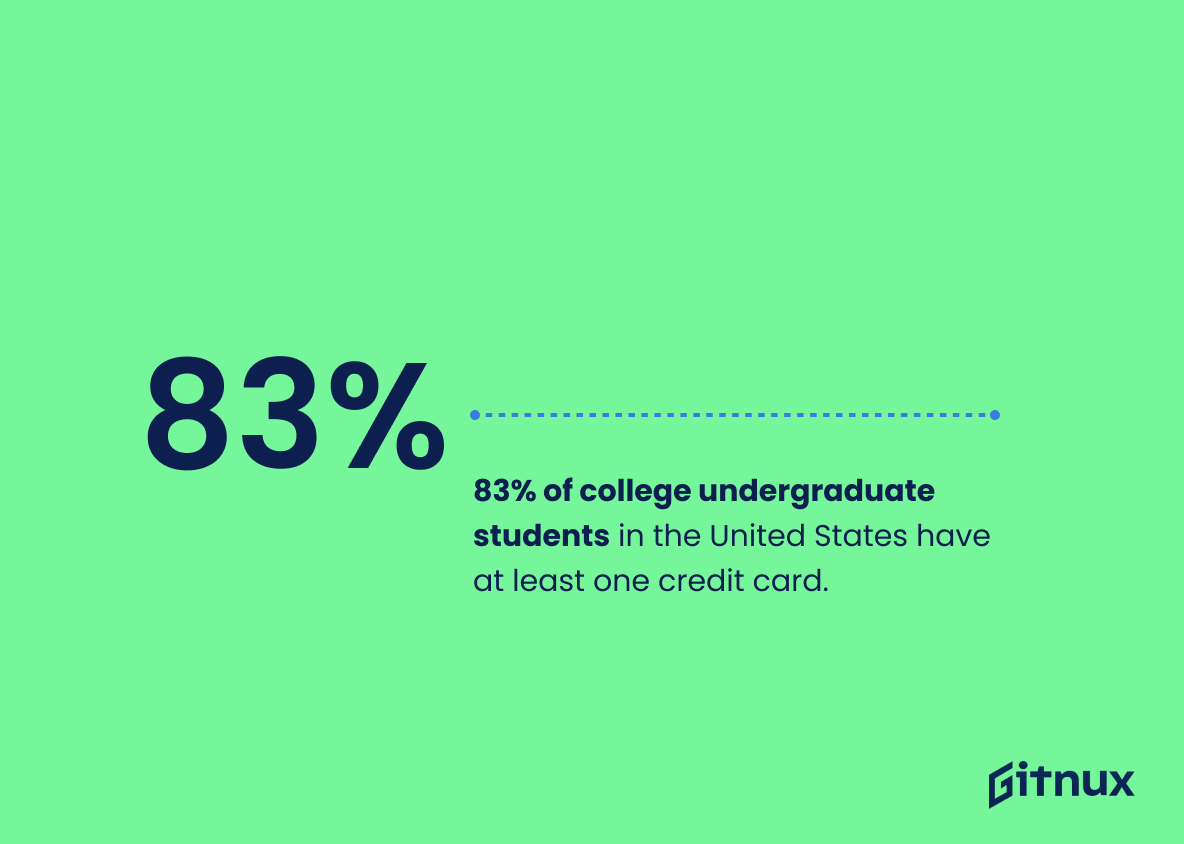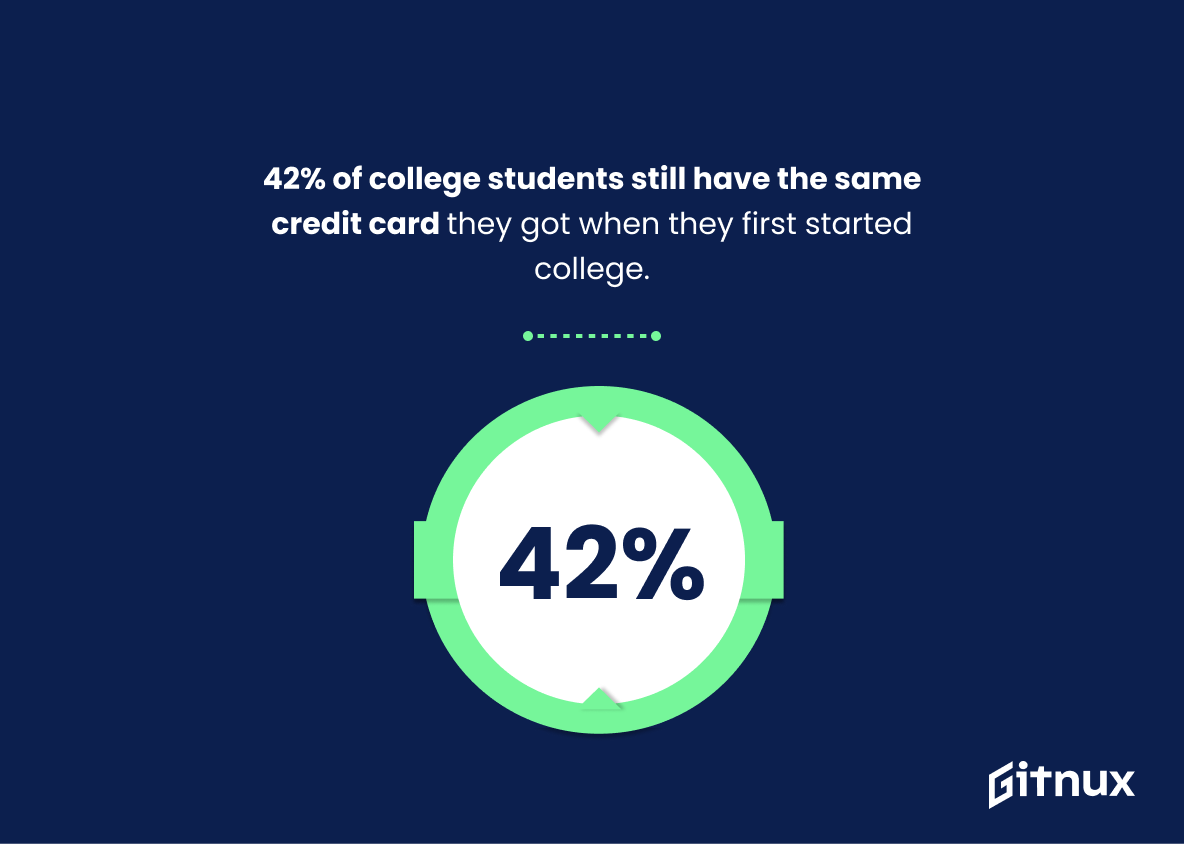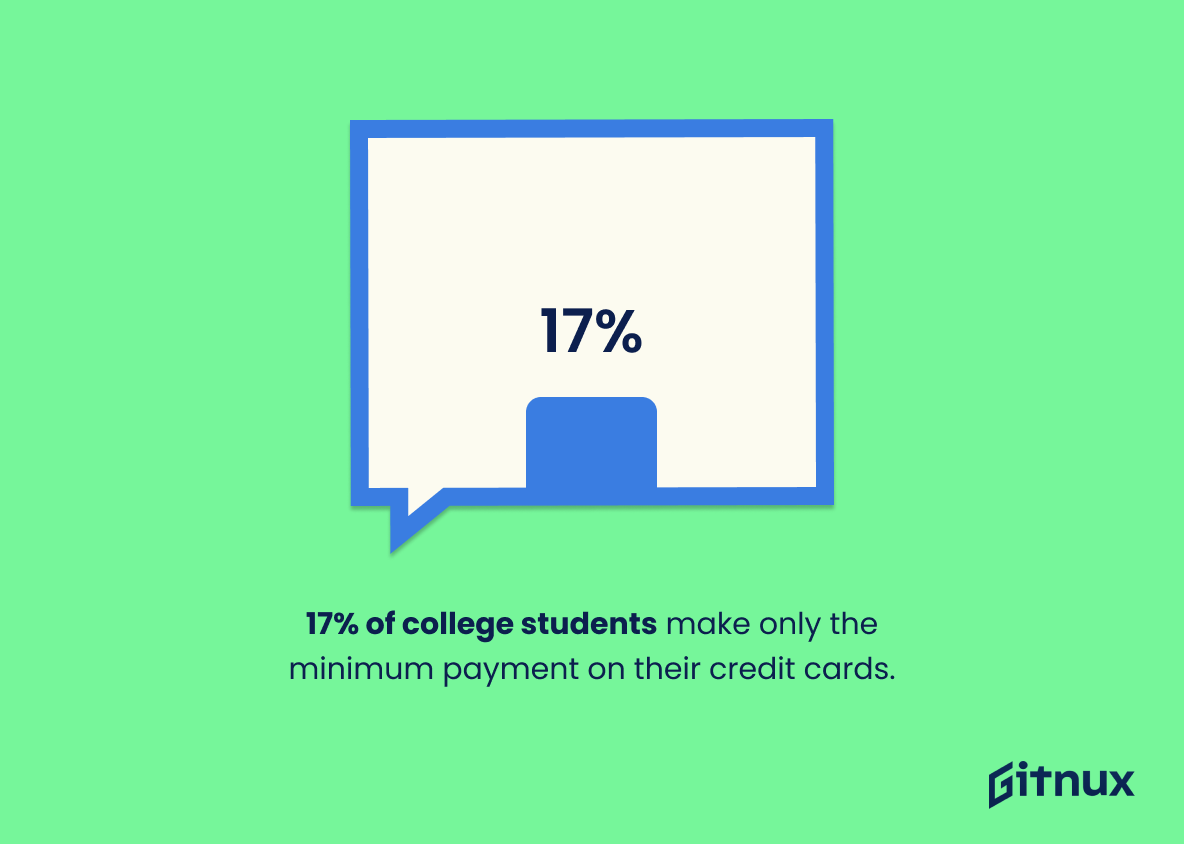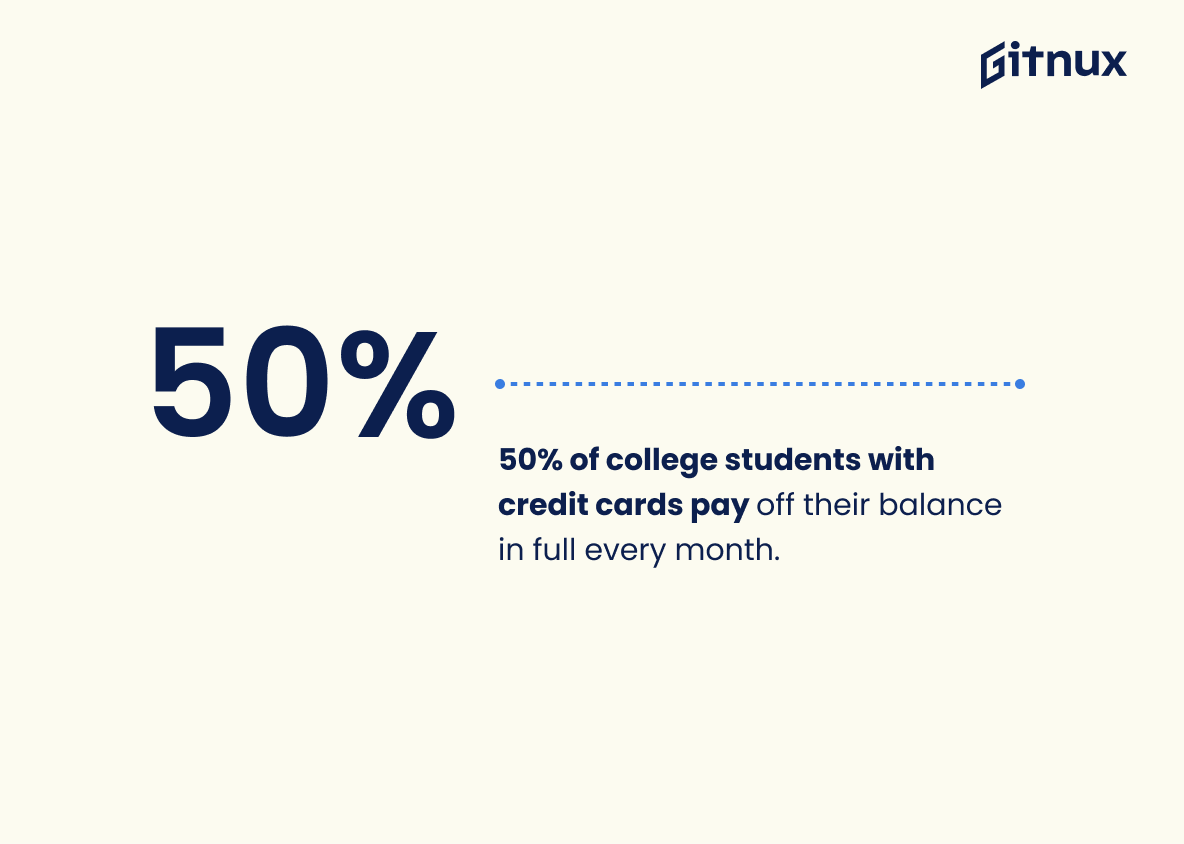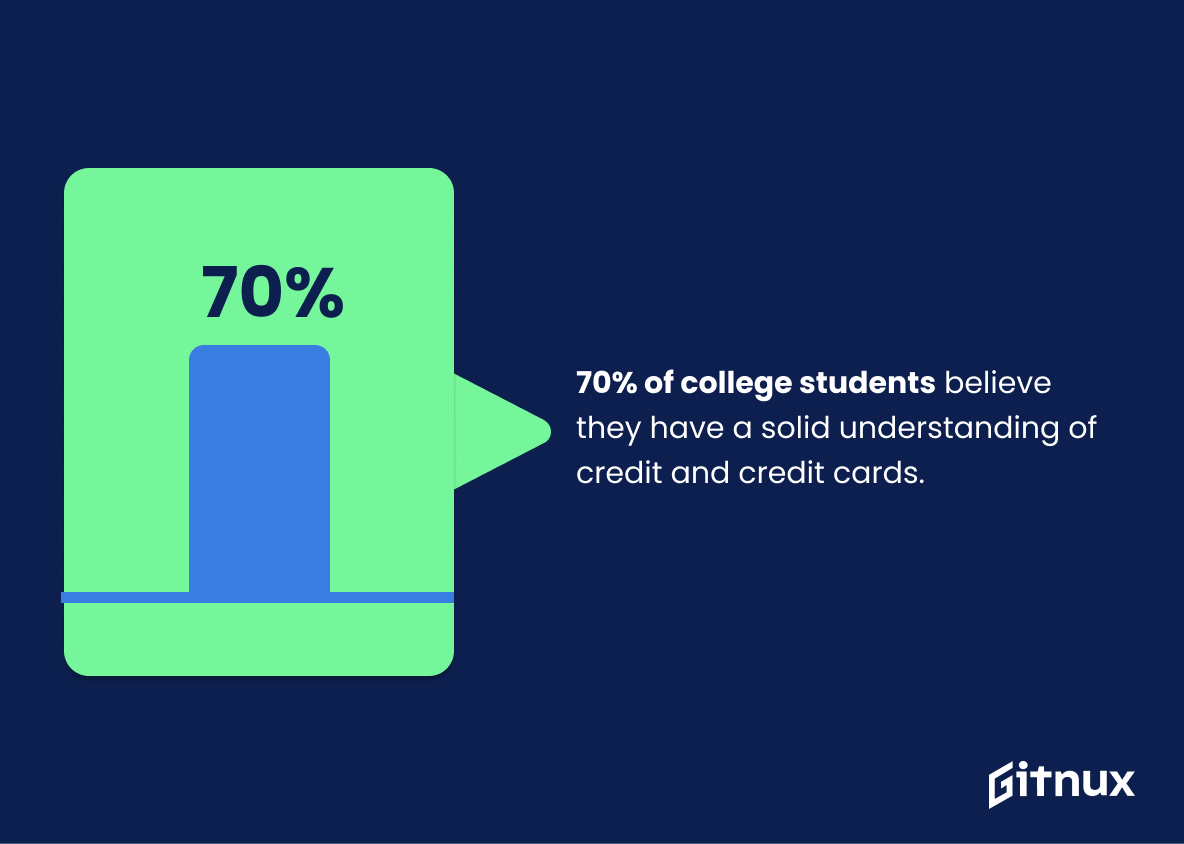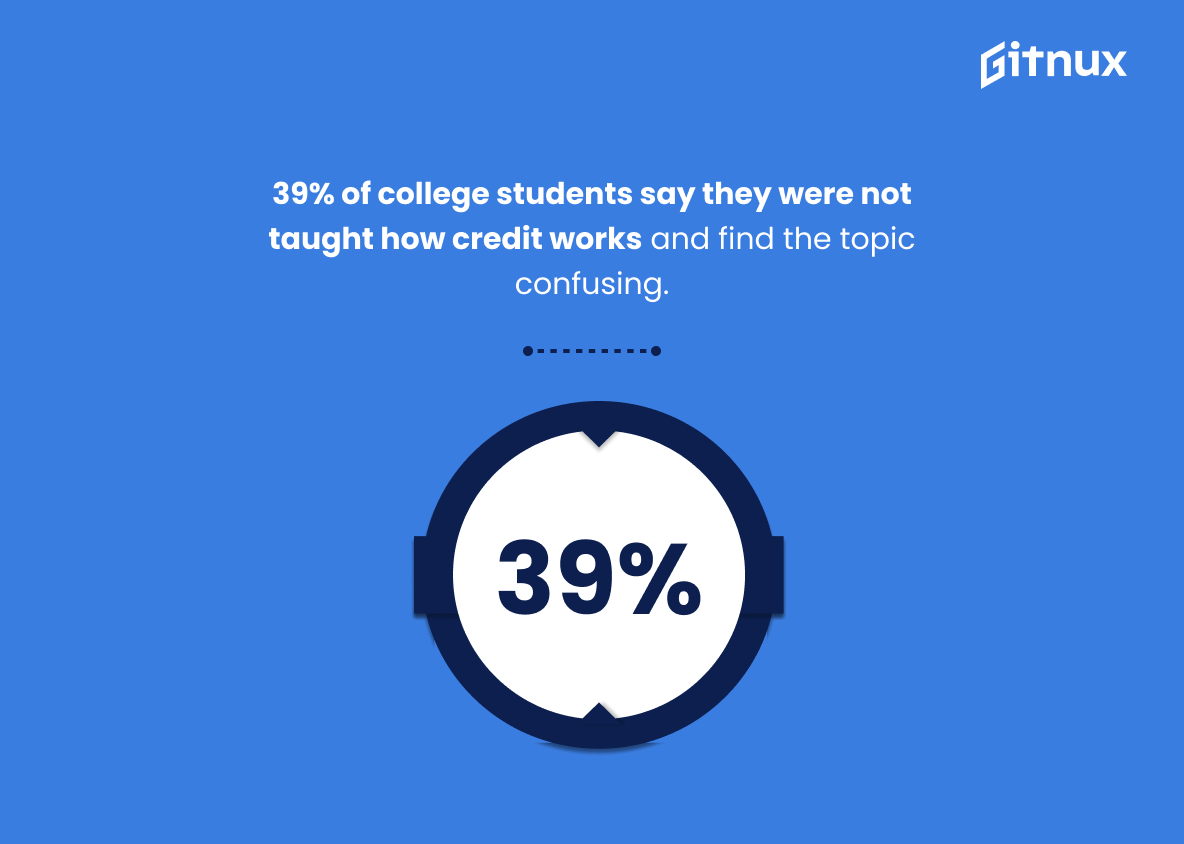College students and credit cards can be a dangerous combination. With the rising cost of tuition, textbooks, housing, and other expenses associated with college life, many students are turning to credit cards as a way to cover their costs. Unfortunately, this often leads to high levels of debt that can take years for them to pay off after graduation.
The statistics below provide an overview of how prevalent student credit card debt is in the United States today:
1. The average college student graduates with $1,000-$2,000 in credit card debt (Debt).org)
2. 36% of American college students hold some form of credit card debt (CNBC)
3. 57% of those who have a credit card carry an unpaid balance month-to-month (Value Penguin) 4. The average amount owed on these balances is $1183 per person (Creditcards .com ) 5 30% paid late fees within the past year( CNBC ) 6 49 % have two or more cards( Creditcards . com ) 7 83 % own at least onecard( Money Under30 ). 8 Onaverage , theyhave 3 1creditcards each.( Huffpost ) 9 Over 15 % possess fouror more.( Credit Com ). 10 College Students spend 22%,15%,and10%of theircreditcard spendingontextbooks ,food ,andmedicalexpenses respectively.( CreditCom). 11 55 %oftheir CardscarryanAPRover 16%. 12 42 percentstillholdthe sameCardtheygotwhenfirststartingcollege 13 Average seniorhas$ 4100inccdebt 14 Promotedstudentsaveragedebtsat$1210 15 6percentoffreshmenhadbalances over 3000 16 17 percentmakeonlyminimumpayments 17 50percentpayoffbalanceinfull 18 63 feelconfidentmanagingtheirCCs 19 70believeunderstandhowitworks 20 39saynot taughtabout itfindtopic confusing
College Student Credit Card Debt Statistics Overview
30% of college students with credit cards paid a late fee in the past year.
This statistic is a stark reminder of the potential consequences of mismanaging credit cards for college students. It highlights the importance of understanding the terms and conditions of credit cards and making timely payments to avoid costly late fees.
49% of college students have two or more credit cards.
This statistic is a telling indication of the prevalence of credit card debt among college students. It suggests that a large portion of college students are already in the habit of using credit cards, and thus are more likely to accumulate debt. This statistic is an important factor to consider when discussing college student credit card debt.
83% of college undergraduate students in the United States have at least one credit card.
This statistic is a telling indication of the prevalence of credit card usage among college undergraduate students in the United States. It highlights the fact that a vast majority of college students have access to credit cards, and thus are at risk of accumulating debt. This statistic is an important factor to consider when discussing college student credit card debt statistics, as it provides insight into the potential for debt accumulation among college students.
The average college student has 3.1 credit cards.
This statistic serves as a stark reminder of the prevalence of credit card debt among college students. It highlights the fact that many students are relying on credit cards to cover their expenses, and that this reliance can lead to a dangerous cycle of debt.
42% of college students still have the same credit card they got when they first started college.
This statistic is a telling indication of the prevalence of credit card debt among college students. It suggests that a large portion of college students are not taking the necessary steps to manage their debt, and are instead relying on the same credit card they had when they first started college. This could be a sign of financial mismanagement, and is a worrying statistic for those concerned about college student debt.
6% of college freshmen have balances over $3,000 on their credit cards.
This statistic is a stark reminder of the financial burden that college freshmen are facing. It highlights the fact that many students are already starting their college careers with a significant amount of debt, and that this debt is likely to increase as they progress through their studies. This statistic is a warning sign that college students need to be aware of the potential for accumulating large amounts of debt, and that they should take steps to manage their finances responsibly.
17% of college students make only the minimum payment on their credit cards.
This statistic is a stark reminder of the financial struggles that college students face. It highlights the fact that many students are unable to pay off their credit card debt in full, and instead are forced to make only the minimum payment each month. This can lead to a cycle of debt that can be difficult to break out of.
50% of college students with credit cards pay off their balance in full every month.
This statistic is a shining example of how college students are taking responsibility for their finances and avoiding the pitfalls of credit card debt. It shows that, despite the potential for debt, many college students are making smart financial decisions and taking control of their spending. This statistic is a testament to the financial literacy of college students and serves as an encouraging reminder that debt can be avoided.
70% of college students believe they have a solid understanding of credit and credit cards.
This statistic is significant in the context of College Student Credit Card Debt Statistics because it indicates that the majority of college students feel confident in their knowledge of credit and credit cards. This could be a sign that students are not taking the necessary precautions to protect themselves from the potential pitfalls of credit card debt.
39% of college students say they were not taught how credit works and find the topic confusing.
This statistic is a telling indication of the lack of financial literacy among college students, which can lead to a greater risk of accumulating credit card debt. It is clear that many college students are not equipped with the knowledge to make informed decisions about credit, and this can have serious consequences.
Conclusion
The statistics show that college students are increasingly taking on credit card debt, with the average student graduating with $1,000-$2,000 in debt. 36% of American college students hold some form of credit card debt and 57% carry an unpaid balance month to month. The average amount owed is around $1,183 per student and 30% have paid a late fee in the past year. 49% own two or more cards while 83%, almost all undergraduates, possess at least one card; 3.1 being the average number held by each individual student. Over 15% even have four or more cards.
College students spend 22%, 15%, and 10 % respectively on textbooks food and medical expenses using their credit cards but 55 % of these same accounts come with APRs over 16%. 42 % still use their original account from when they first started school while 63 % feel confident about managing them responsibly despite only 50 percent believing they understand how it works properly – 39 percent saying otherwise due to lack of education regarding this topic . 17 percent make minimum payments every month whereas half pay off balances completely before any interest can be accrued resulting in an overall senior class owing approximately $4100 upon graduation day (with freshmen having up to three times as much).
It’s clear that although many college students may not fully comprehend what comes along with owning a credit card there is no denying its prevalence among young adults today who often find themselves struggling under large amounts of financial burden as a result
References
0. – https://www.www.creditcards.com
1. – https://www.www.huffpost.com
2. – https://www.www.moneyunder30.com
3. – https://www.www.cnbc.com
4. – https://www.www.creditdonkey.com
